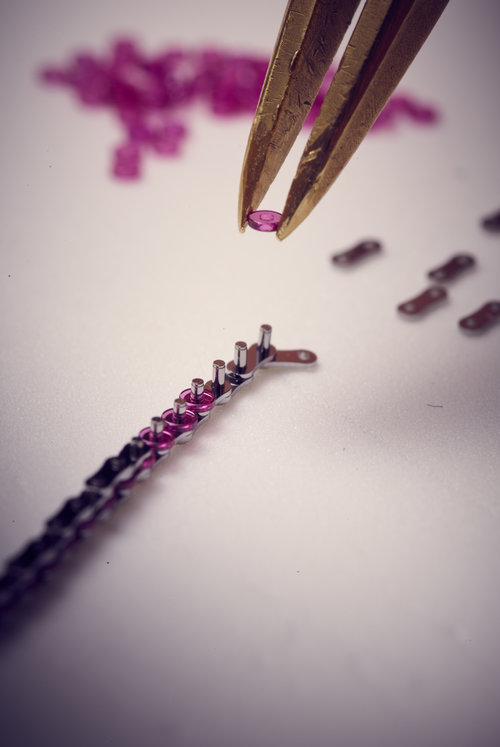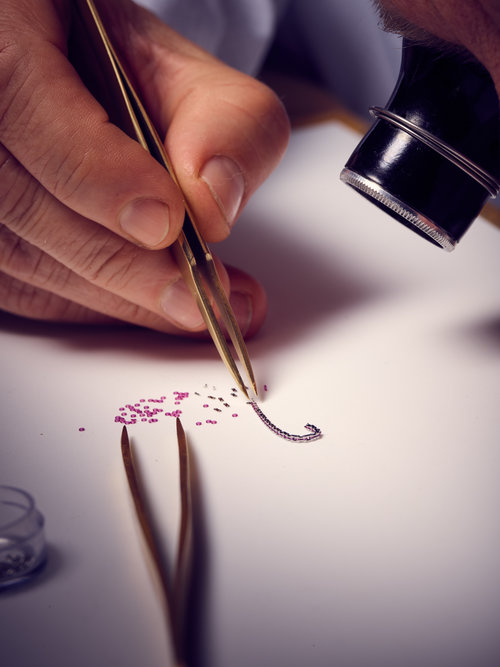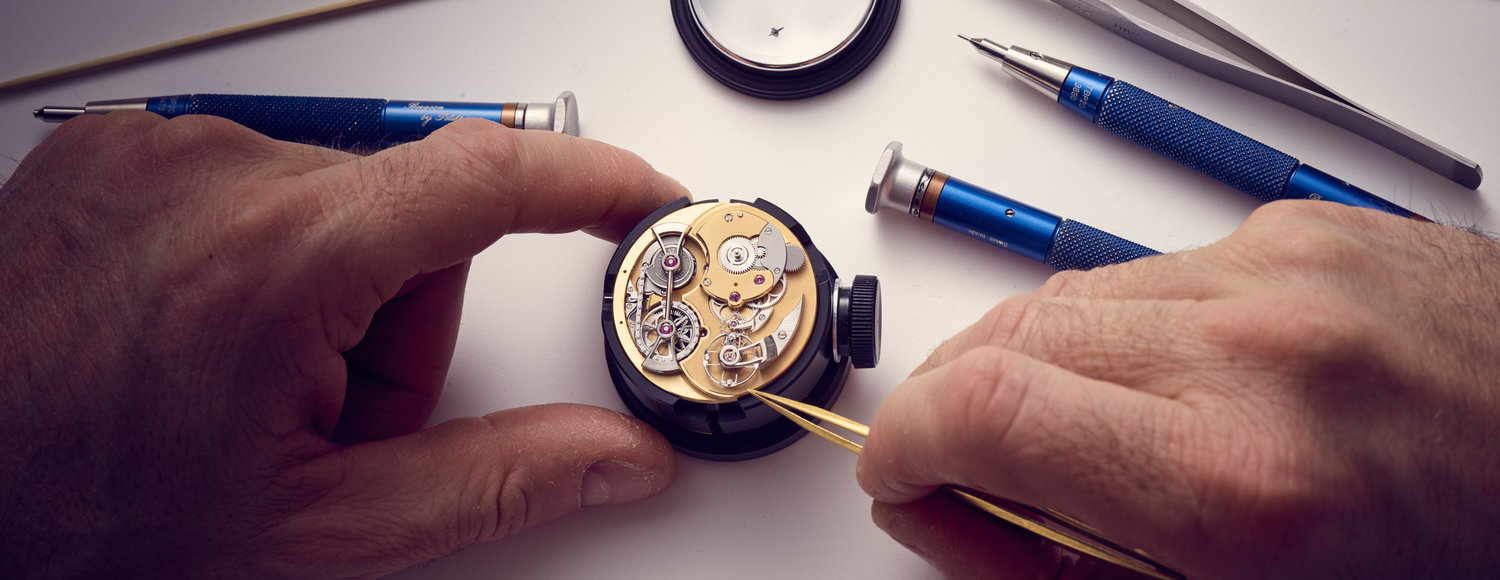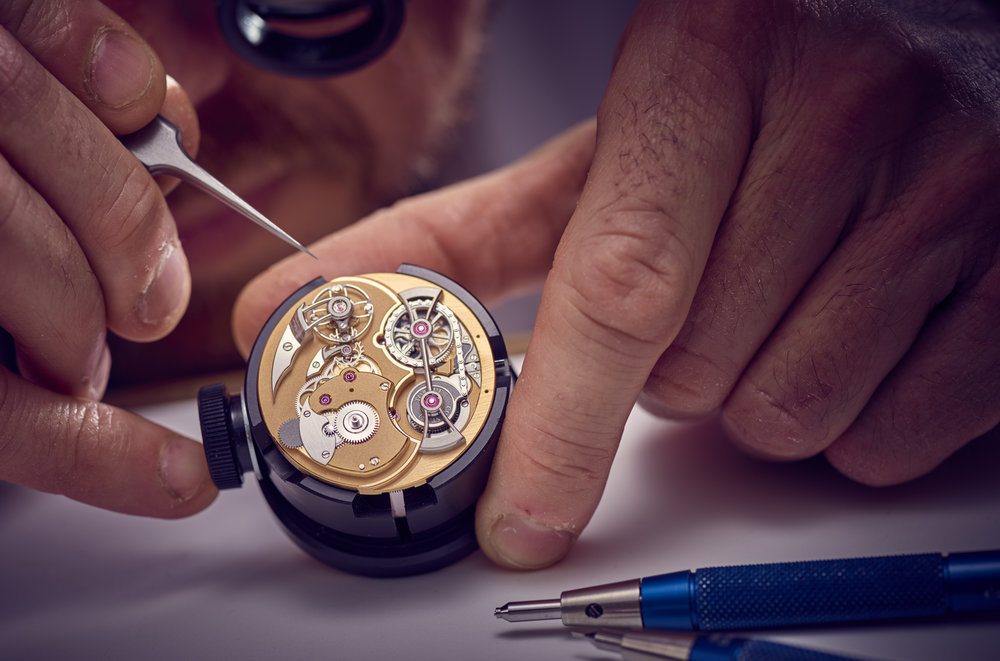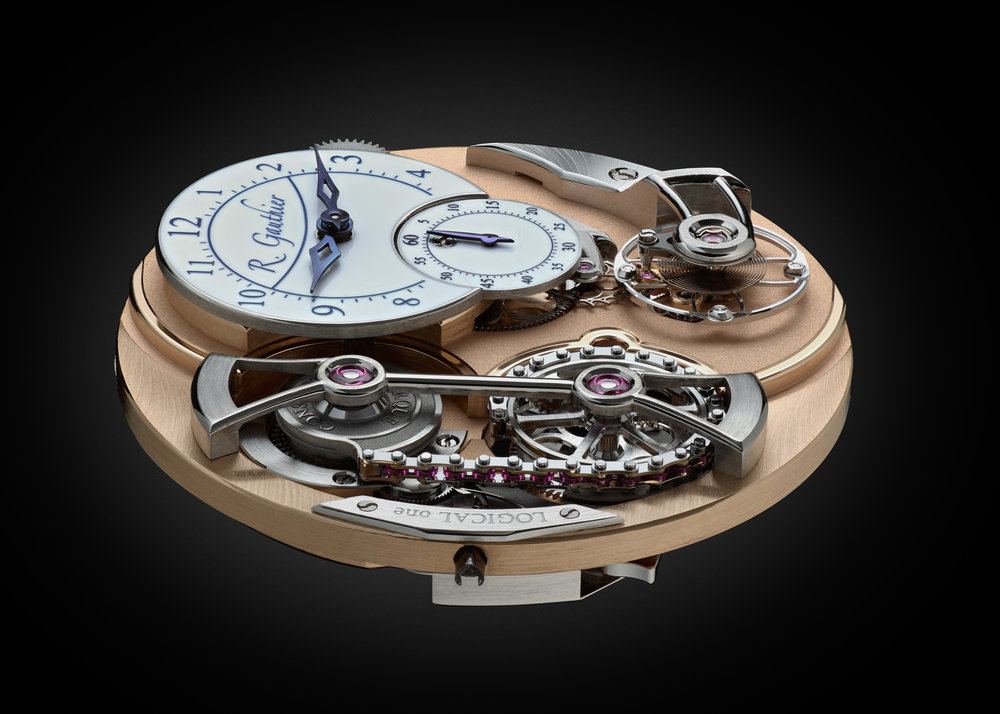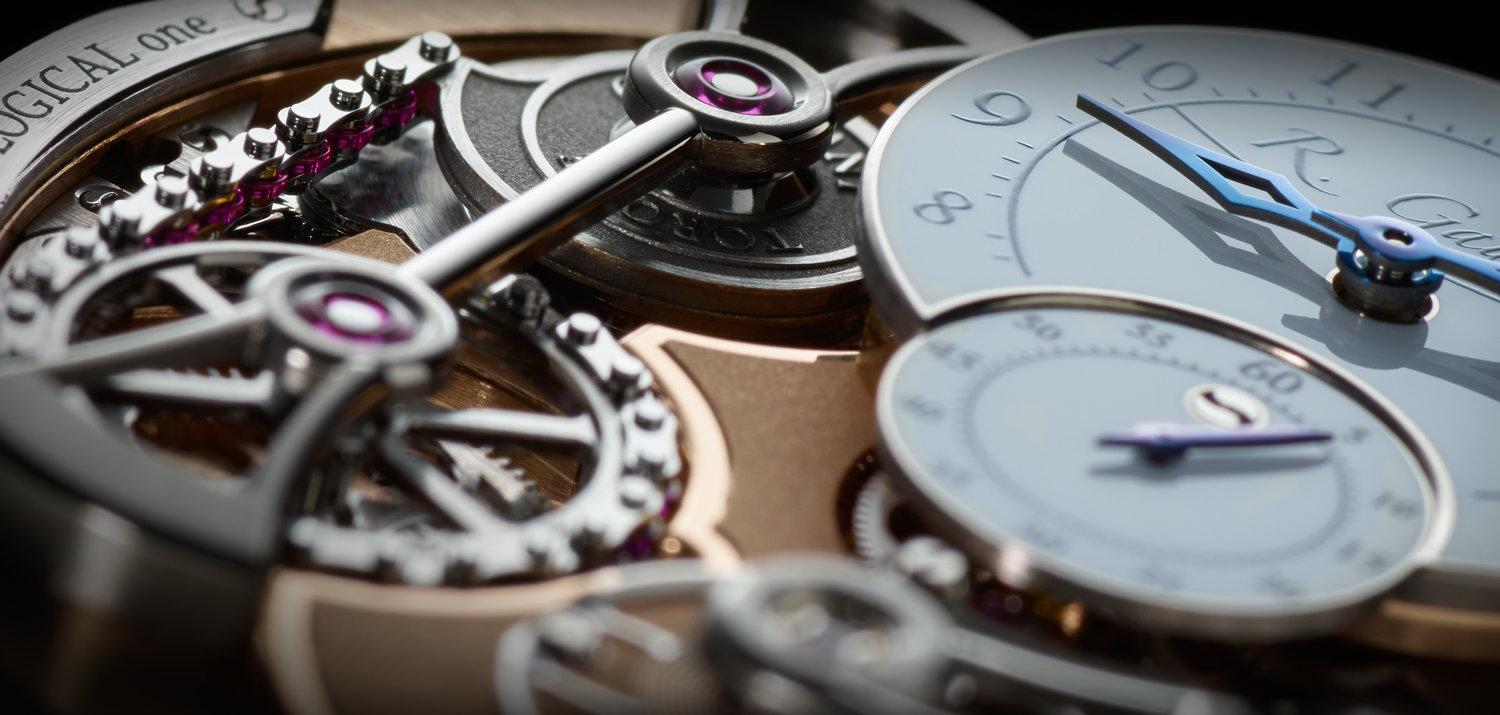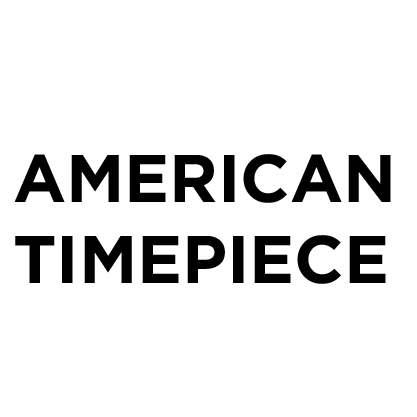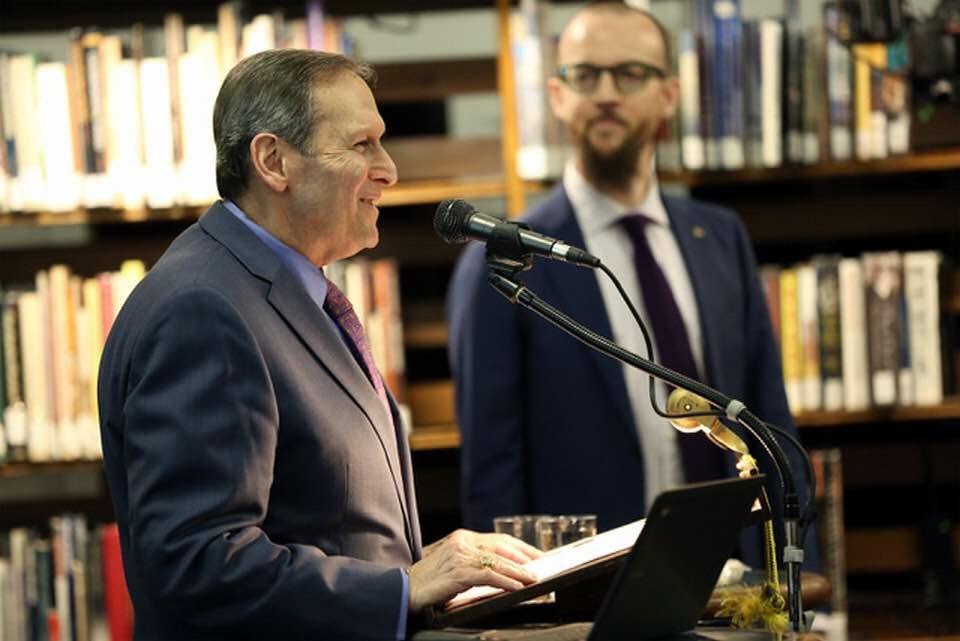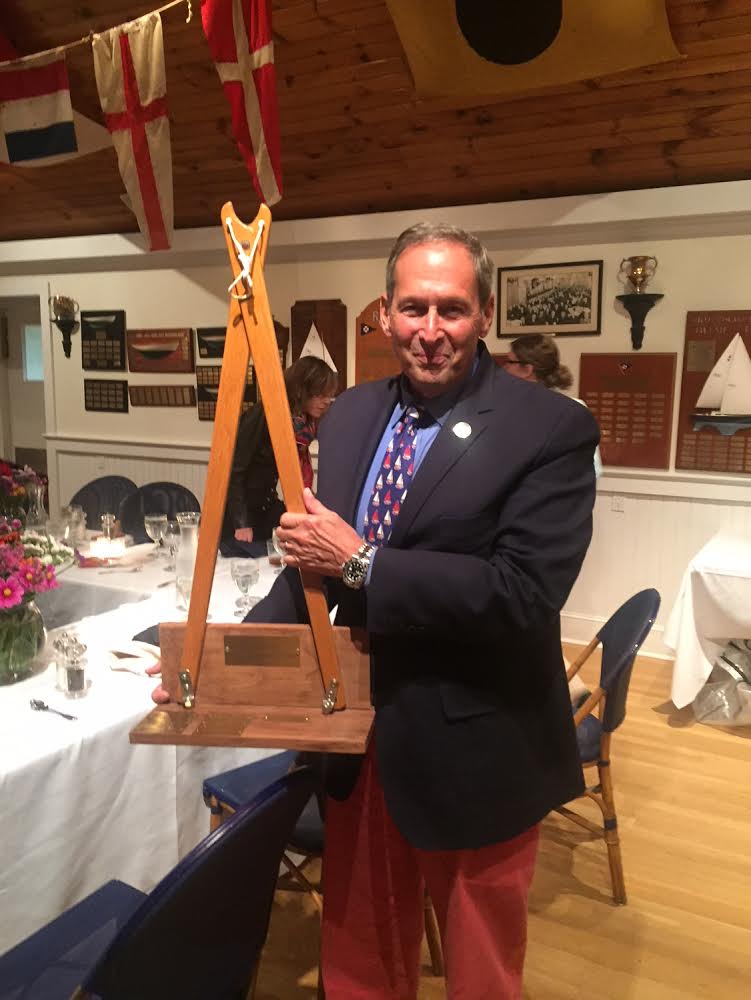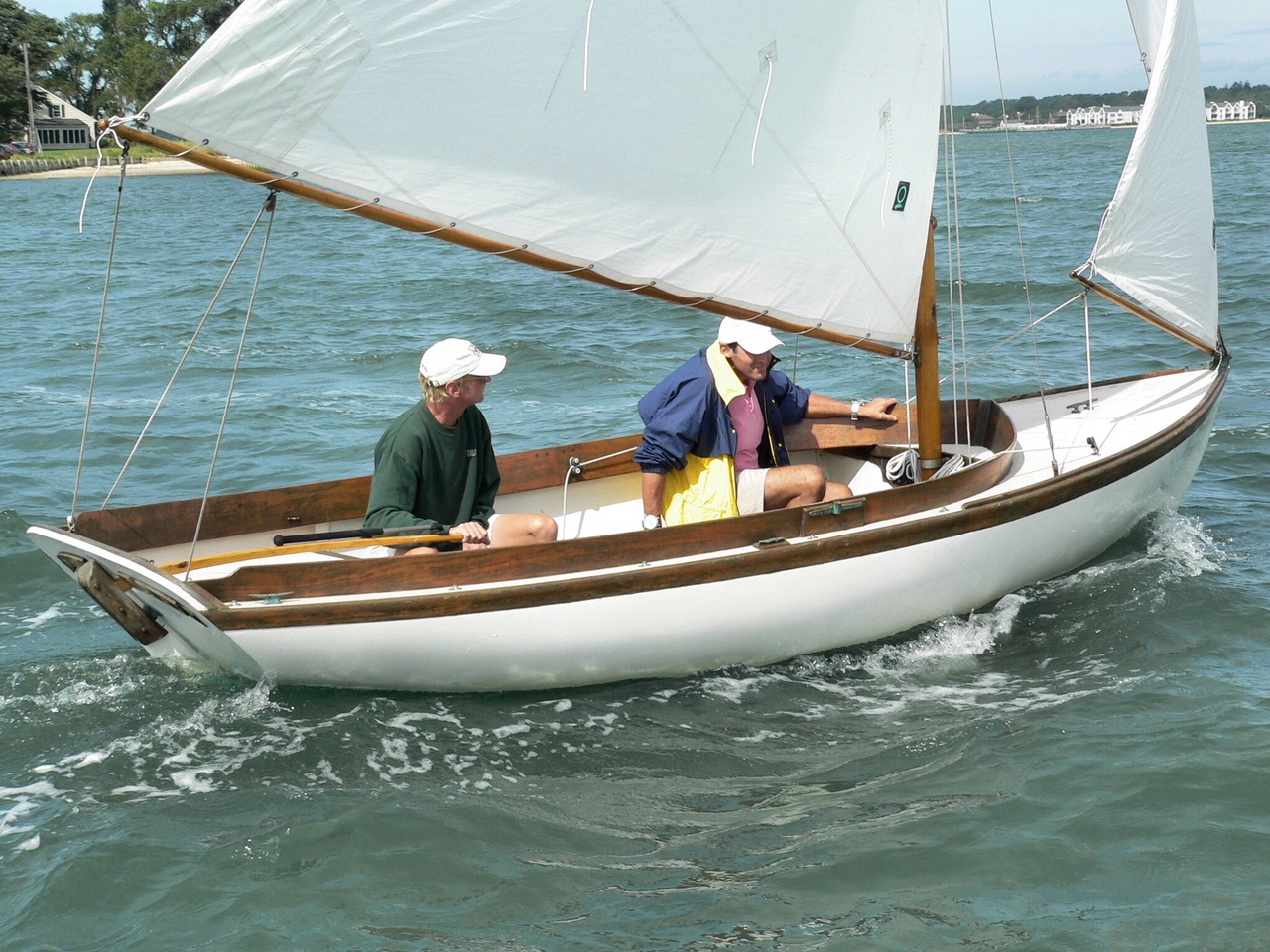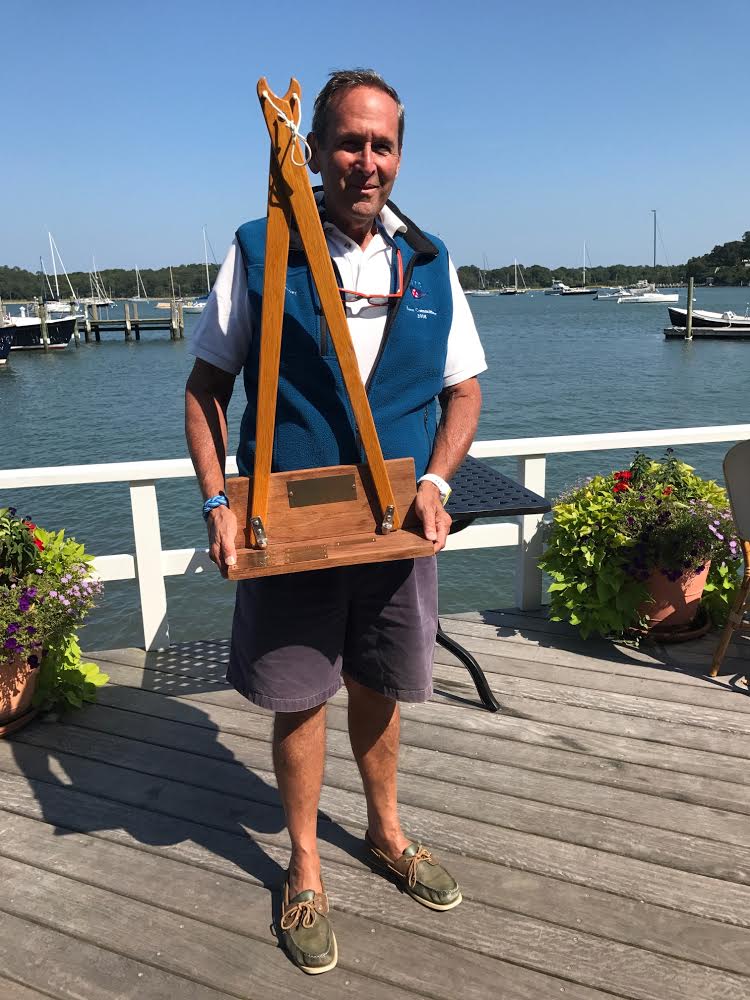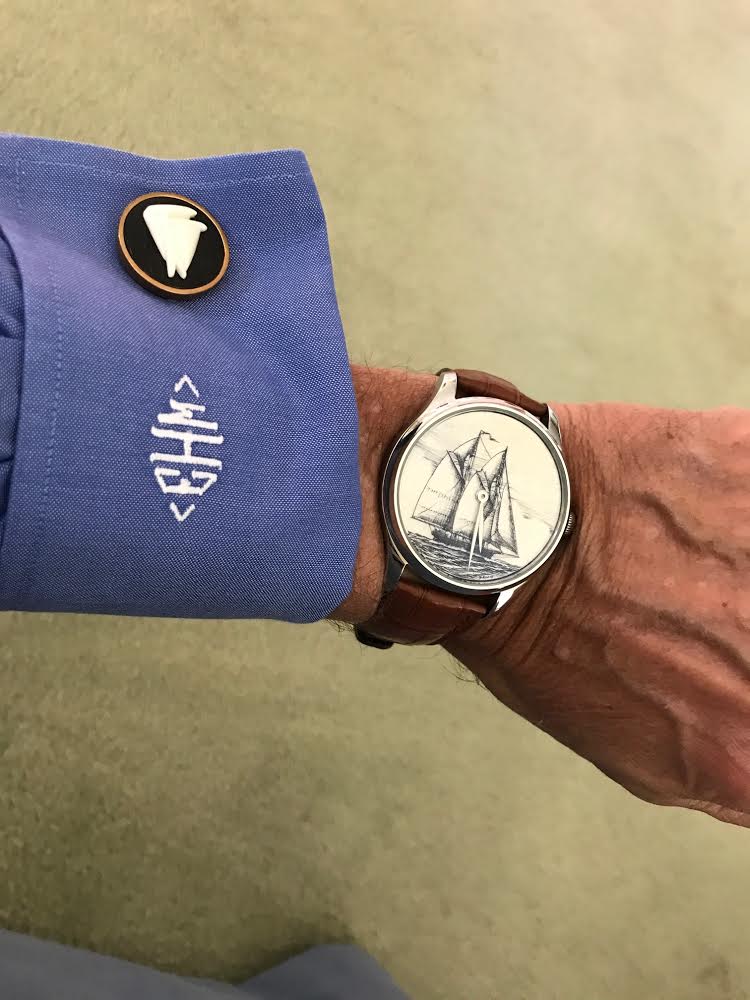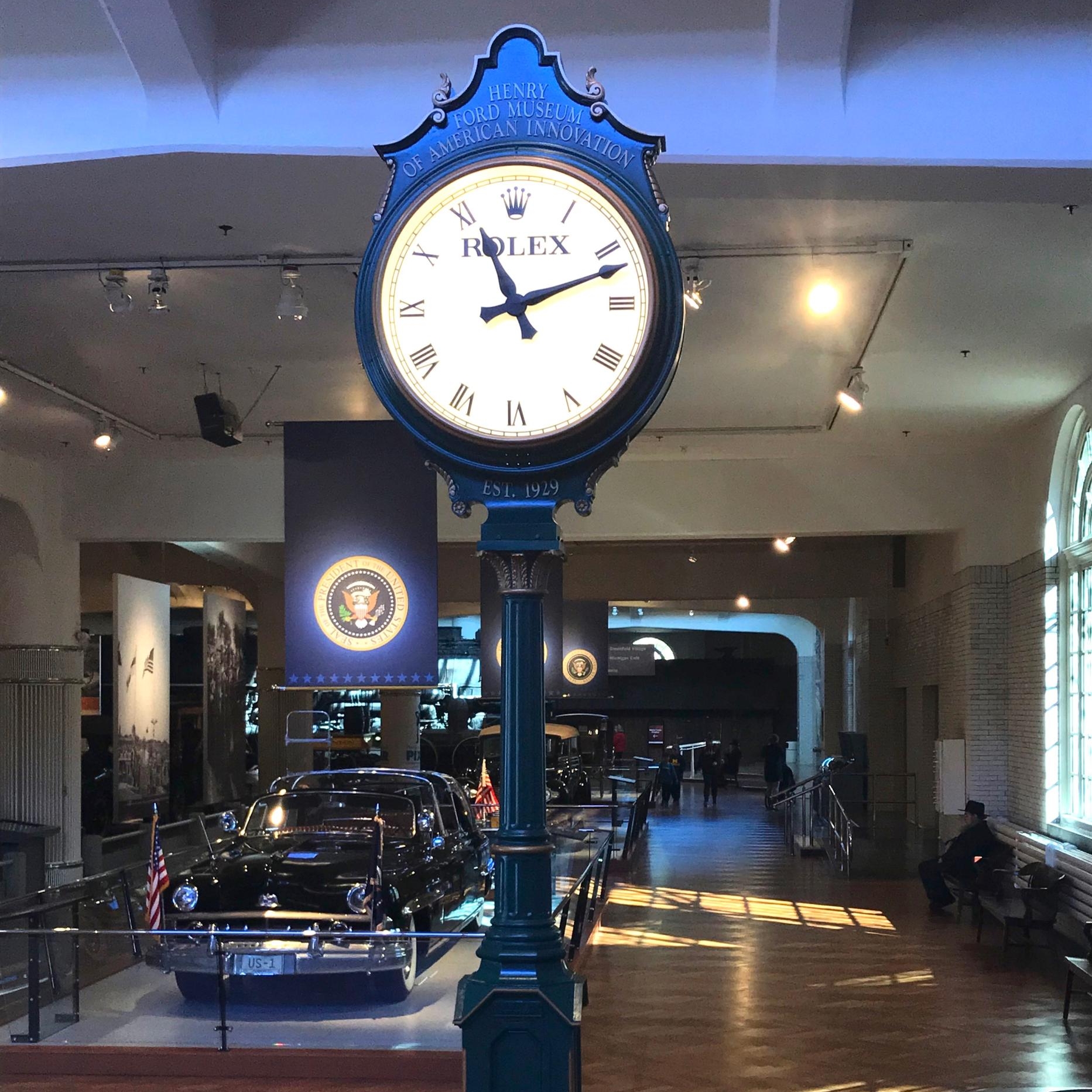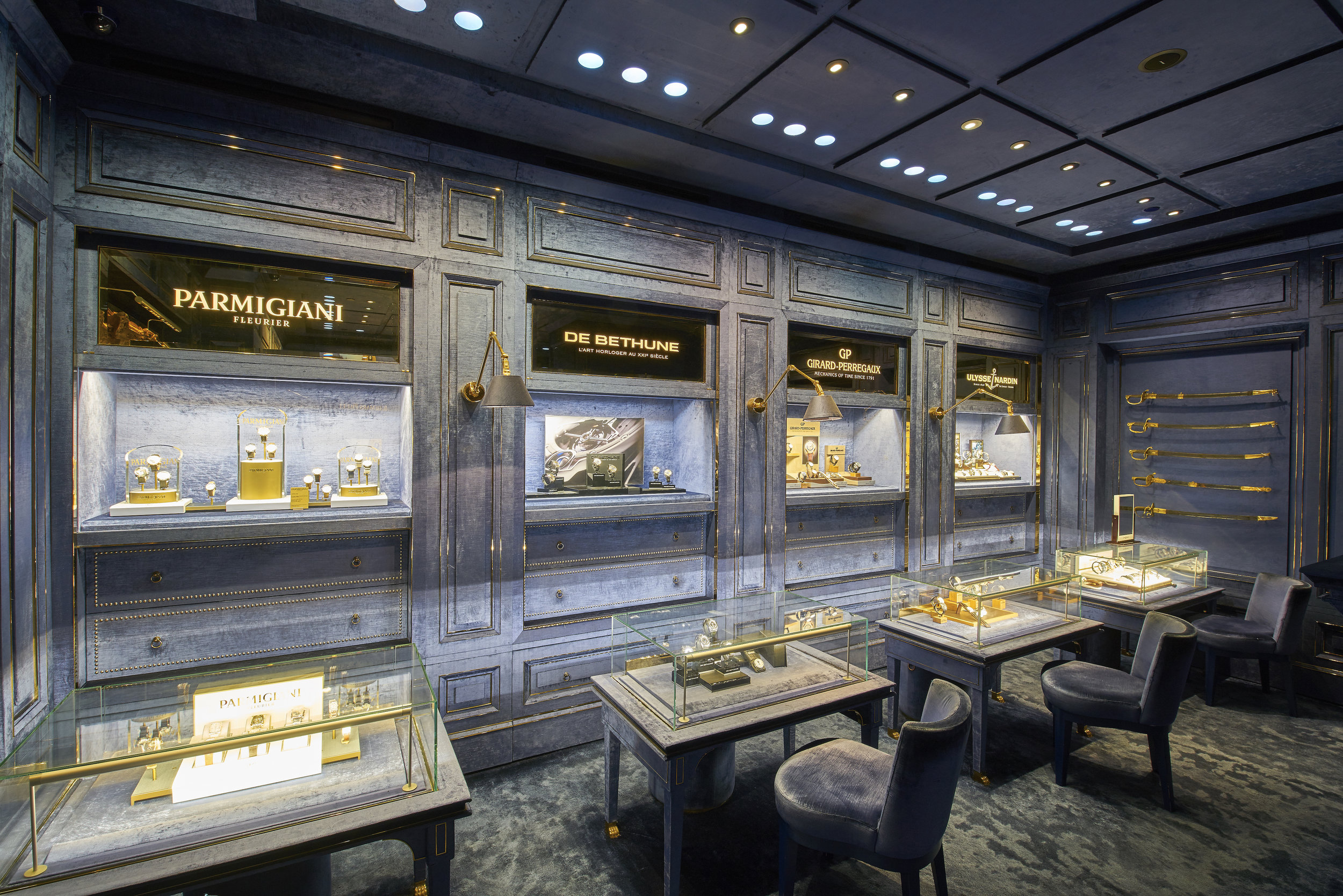Click here to purchase tickets!
HSNY's Traveling Education heads to Los Angeles, Oct. 13
Upcoming Lecture: The Evolution of the Chain-and-Fusee Mechanism in the Quest for Constant Force
Join HSNY on Monday, October 29, 2018 for a lecture on The Evolution of the Chain-and-Fusee Mechanism in the Quest for Constant Force, by Romain Gauthier, Founder & CEO of Manufacture Romain Gauthier SA.
Romain Gauthier
When the first spring-driven clocks were invented in the 15th century, they brought with them a conundrum that would become one of horology’s holy grails – providing constant and consistent energy to the movement.
Today, the vast majority of machines run on constant force: cars and planes, for example, don’t start running more slowly as their fuel runs low. A mechanical timepiece works quite differently. The force, or torque, delivered by its mainspring varies as the mainspring unwinds, resulting in fluctuations in the watch’s timing rate over the course of its power reserve.
Watchmakers, clockmakers and engineers alike have proposed various mechanical solutions throughout history for solving the puzzle of achieving constant force from the mainspring.
This lecture will discuss their merits and drawbacks with a special focus on the chain-and-fusee mechanism that dominated watchmaking in the 17th century and which has seen an intriguing return to use in contemporary haute horlogerie, including Romain Gauthier’s very own Logical One.
READ THE FULL STORY HERE!
Brittany Nicole Cox awarded as finalist in MAD's Burke Prize
If you were around in March you may recall a riveting lecture by Brittany Nicole Cox on horological conservation and automata.
Now, the Seattle-based antiquarian horologist is back in New York City, this time as a finalist in the Museum of Arts and Design’s (MAD) Burke Prize for contemporary craft. Cox, who holds one — if not the only — Masters degree in horological conservation in the US is currently one of 16 finalists chosen for her accomplished work.
On exhibition until March 17, 2019 is Cox’s Cochlea (Snail), a seemingly simple yet intrinsically complex mechanism fashioned as a snail with a rabbit head. The work is composed of brass, steel, sterling silver and cocobolo.
“Cochlea is a marriage of the philosophy of nature and the machine, the cam and the rose engine, and the duality of human nature represented through the pairing of the rabbit and snail,” explains Cox. “It is based on the illustrations found in the margins of illuminated manuscripts and bestiary texts.”
The inaugural Burke Prize — an unrestricted award of $50,000 — will be awarded to one professional artist selected by a jury of professionals in the fields of art, craft and design.
HSNY wishes Britany Nicole Cox much luck and a great exhibition season!
AWCI hosts American Timepiece Austin, October 12 & 13
Our friends at the American Watchmakers-Clockmakers Institute (AWCI) are hosting American Timepiece Austin this weekend!
The Lone Star State is about to be buzzing with timepiece enthusiasts when collectors, brands and vendors unite on Friday, October 12 and Saturday, October 13. Texas provides the perfect meeting place for those not based on the East or West coast and best of all, the event is free and open to the public.
For full details and tickets, please visit http://www.americantimepiece.com/austin.
Upcoming Lecture: Fifty Fathoms: The Conception and Evolution of the Modern Diving Watch
Join HSNY on Monday, October 1, 2018 for a lecture on Fifty Fathoms: The Conception and Evolution of the Modern Diving Watch, by Jeffrey Kingston, Author & Lecturer for Blancpain Watches.
Jeffrey Kingston
Today, many take diving watches for granted. Perhaps this is because few are actually used for diving. Conference room wear is the modern norm.
But in the aftermath of World War II, things were different. The experience of the war set many of the world’s militaries on the path of developing combat diving corps. At the same time there were a miniscule number of amateur diving clubs that came into being giving birth to the notion of sport diving. Both groups had common cause for much of their equipment. Prominent on the list was a timing instrument to keep track of elapsed time underwater.
In sharp contrast with other types of watches that followed designs and conventions developed over two centuries, as the decade of the 1950’s began, there was no precedent to follow for the construction of dive watch. The creation of a dive watch would be a white sheet of paper project.
This lecture will follow the inspired story of Jean-Jacques Fiechter, then CEO of Blancpain and a passionate diver, on his development of the Fifty Fathoms and his innovations that made the watch a reality. The history will include the chapters involving the French, the German, and the US Navy.
Read the full story here!
HSNY To Host Watchmaking Classes In Detroit, September 29 & 30
Already a top manufacturing hub in the country, Detroit will have the unique opportunity to get hands on with the assembly of watches when the Horological Society of New York (HSNY) brings its educational courses to town later this month.
Founded in 1866, HSNY is America’s oldest watchmaking guild and a 501(c)(3) nonprofit whose mission is to advance the art and science of horology through education. What began as a program exclusively in New York City, HSNY’s award-winning classes have received nationwide demand resulting in a new branch of Traveling Education. On Saturday, September 29 and Sunday, September 30, HSNY will make their first trip to Detroit with classes hosted by StockX.
The Detroit-based marketplace for luxury consumer goods will offer watch enthusiasts the chance to discover what makes a timepiece tick during a special two-day event held at a high-tech space in the historic district of Corktown. Aficionados will get a first hand look at what it’s like to be a watchmaker, learning the proper usage of tools, terminology and theories of modern horology. The hands-on classes will cover material from HSNY’s Horology 101 - 103 courses regularly taught in Manhattan. Students will gain a comprehensive understanding of the inner workings of a timepiece by disassembling and reassembling a complete mechanical watch movement with exercises ranging from movement mechanics, gear training, and winding and setting. Each four-hour course will be instructed by HSNY’s staff of professional watchmakers - Vincent Robert, Director of Traveling Education and Steve Eagle, Director of Education - allowing each student to work one-on-one with experts in the field.
As an added treat, StockX will be hosting a cocktail party on Saturday, September 29, from 7PM-9PM, where watch enthusiasts are invited to mix and mingle.
Courses will be offered on Saturday, September 29 (9AM-1PM & 2:30PM-6:30PM) and Sunday, September 30 (9AM-1PM). Admission is $500 and includes access to watchmaking tools and a mechanical watch movement for the duration of the class. No previous experience is required. Profit generated from ticket sales goes towards HSNY’s mission of advancing the art and science of horology through education.
The Horological Society of New York’s Traveling Education courses will be hosted by StockX in Detroit, Michigan at BULLOCK GREEN HDWE, 2556 Michigan Avenue, Detroit, MI 48216.
Meet The Board: Karen Ripley, Trustee
Last month, we launched a new series titled Meet The Board, where we take a moment to profile one of HSNY’s very own Board members.
Whether you’ve been a part of HSNY for decades or are a new member, we wanted to reintroduce ourselves and share some of our favorite anecdotes, tips and fun facts.
Meet Karen Ripley, a Trustee and very dear friend to HSNY!
WatchTime New York 2018, October 26-27, 2018
It's back! WatchTime New York, America’s largest luxury watch event for collectors and enthusiasts, is hosting its 4th annual event at Gotham Hall on Friday, October 26 and Saturday, October 27.
Don't miss the opportunity to mingle with collectors, industry personalities, brand representatives and more! Top international brands will be exhibiting their iconic timepieces in addition to curated panel discussions.
For full details please visit https://www.watchtimenewyork.com.
Meeting Recap: Mechanical Jewels: The Art of the Watch 1500 – 1800
Video recordings of lectures are available to members immediately (using your membership password), and the general public with a 2 month delay.
Jonathan Snellenburg, Director of Watch and Clock Sales for Bonhams Auctioneers, New York
September 13, 2018
The functionality of watches has changed over the centuries but one thing that has remained constant is their unwavering beauty. Such was the topic at the September 13, 2018, meeting of the Horological Society of New York, where Jonathan Snellenburg discussed the evolution of timepieces and how watches evolved to look like what we recognize today.
Snellenburg, Director of Watch and Clock Sales for Bonhams Auctioneers, set the stage in the 1500s, where the watch’s distant relatives were not worn on the wrist nor carried but rather appeared as miniature table clocks. These predecessors were small and thick, partly due to limitations of the placement of vertical crown wheels.
Up next in the watch’s evolution was to make timepieces portable. In the 1600s these ticking machines took the form of pendants, often oval and streamlined with covers to protect the hand and dial. Covers also provided a canvas for decoration where watches came to depict paintings, thus becoming vessels for symbols and symbolism.
An era of color sprung in the 1700s, where the rise of watches coincided with enamel painting. Watches became a medium to carry a piece of art, especially with enamel being all the rage. Coinciding with more detailed decorations was the gradual change from pendant jewelry to more precise timekeepers with the introduction of the balance spring in the late 1700s. Watches had graduated from expensive novelties to useful timekeepers with the new harmonic oscillator.
The lecture concluded with the beginning of the 18th century, where watches migrated from enamel designs to highly decorated pieces of metalwork. Watches became part of the costumes of the century, worn by elegant ladies and given as diplomatic gifts. Then, the appearance of watches radically changed with the development of horizontal escapements, which lead to the thin watch styles we see today.
This would later set the stage for 19th century complications which brings us up to modern time – where watches are now inexpensive enough for anyone to own. Whether the cost is $24 or $240,000, beauty is in the eye of the beholder and far more goes into the value of a timepiece beyond its price tag.
HSNY thanks Jonathan Snellenburg for his fascinating lecture!
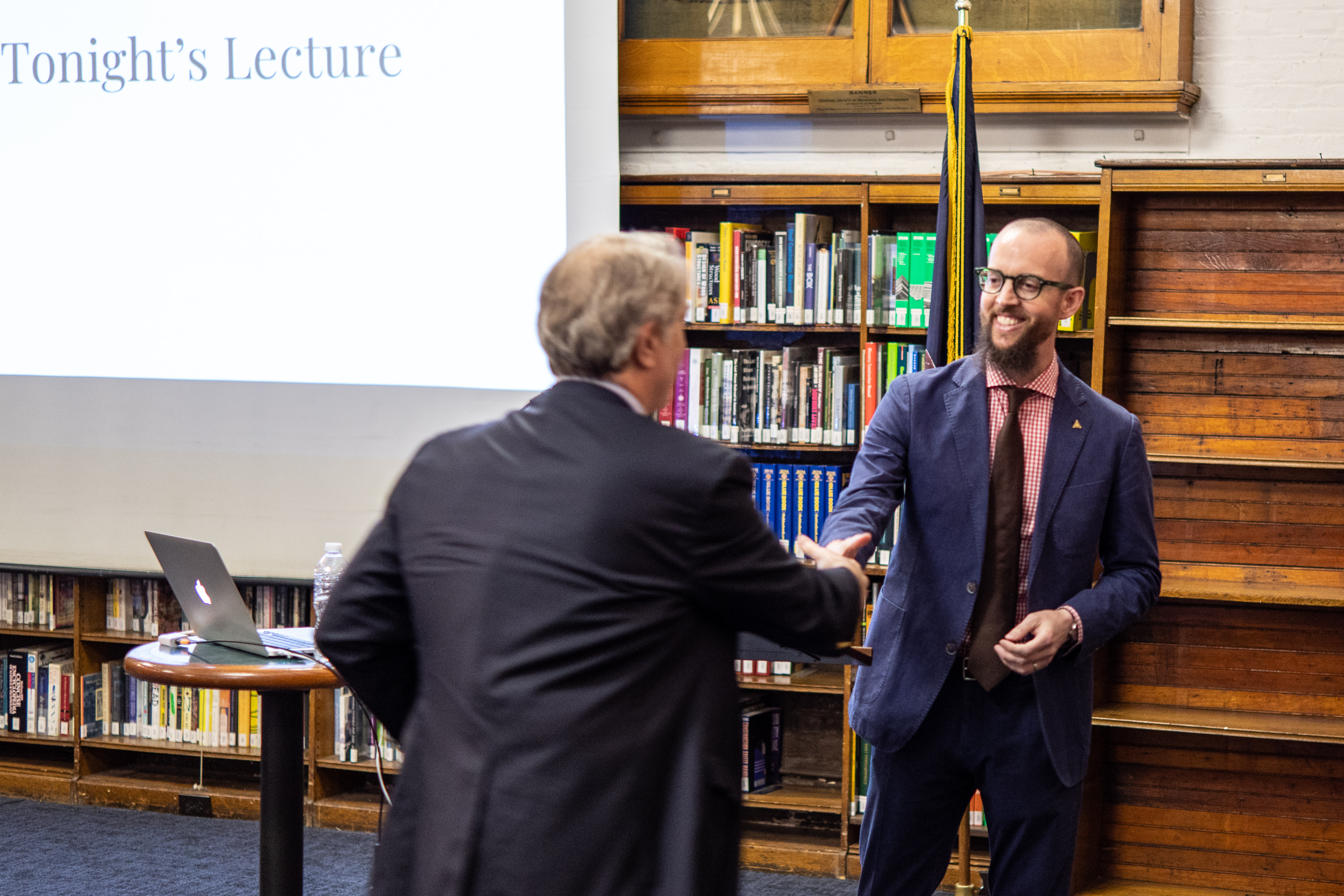
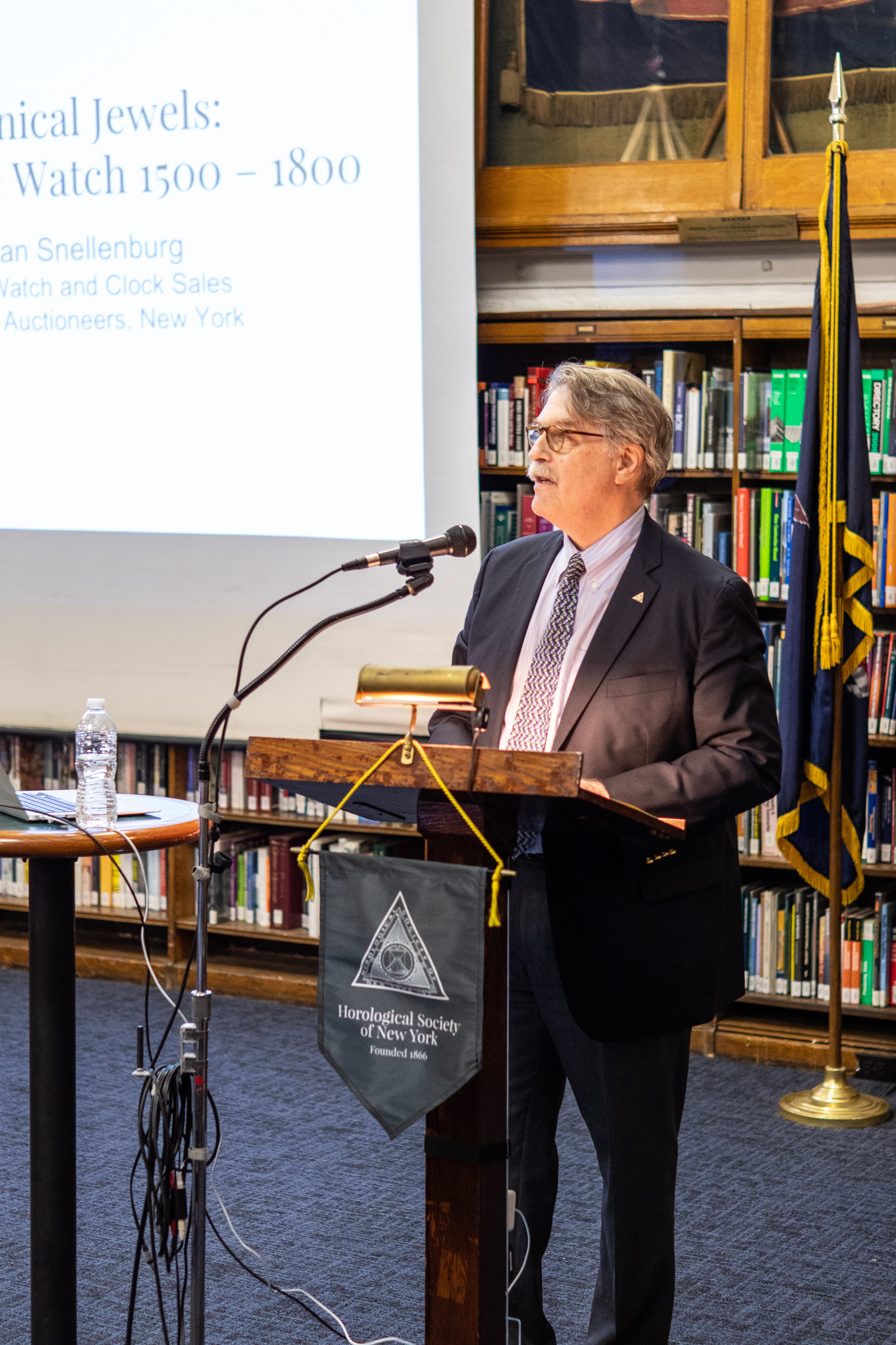


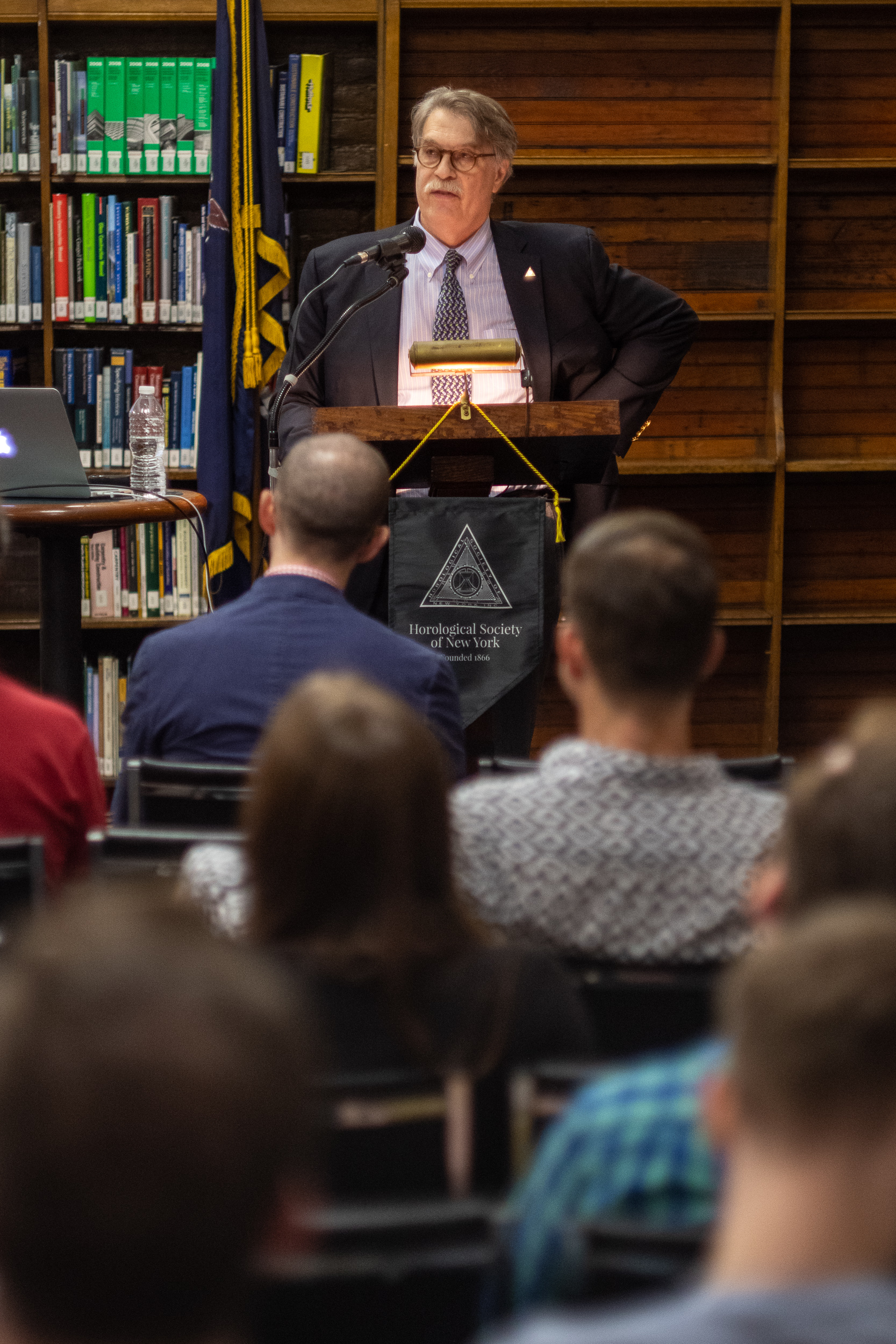

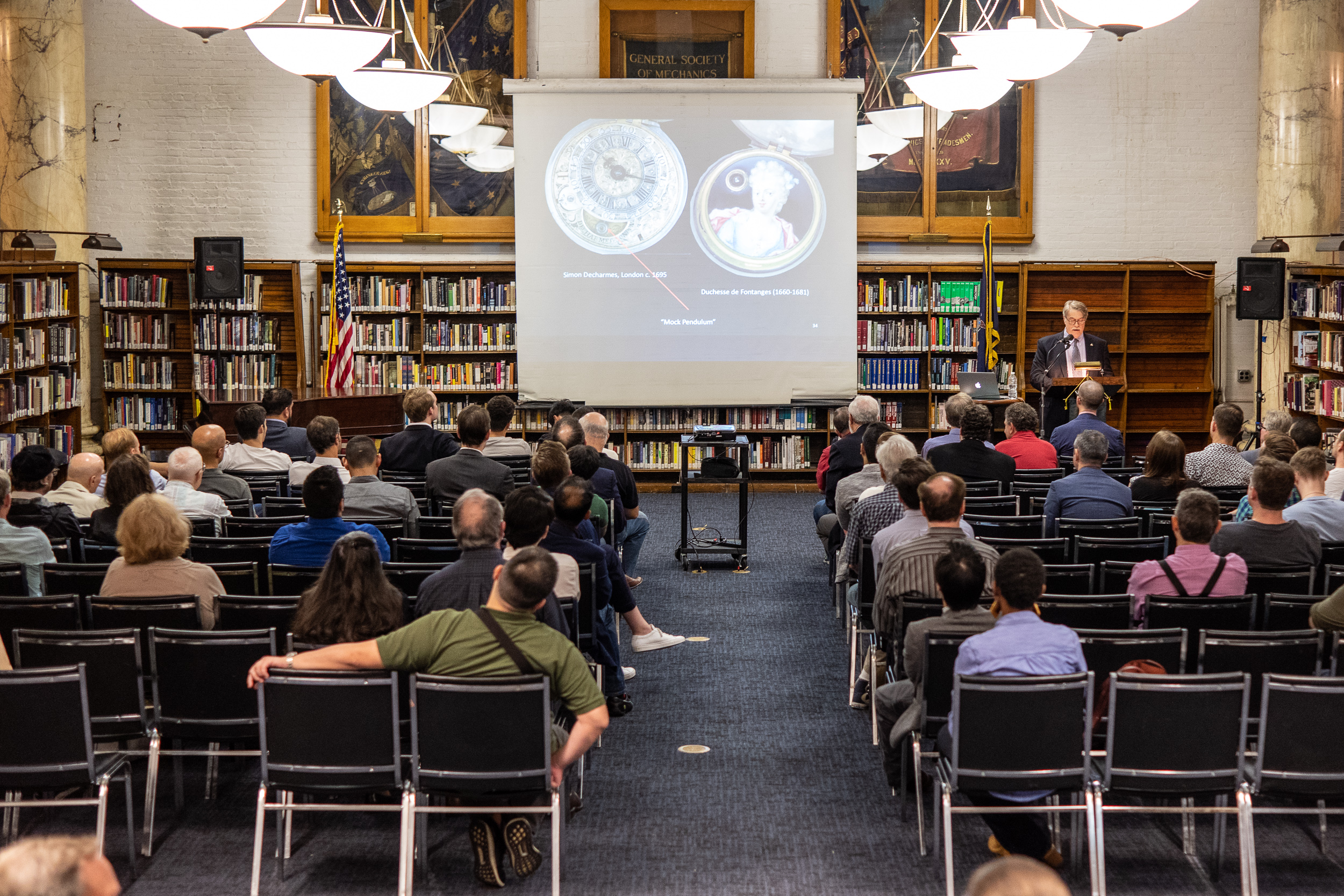
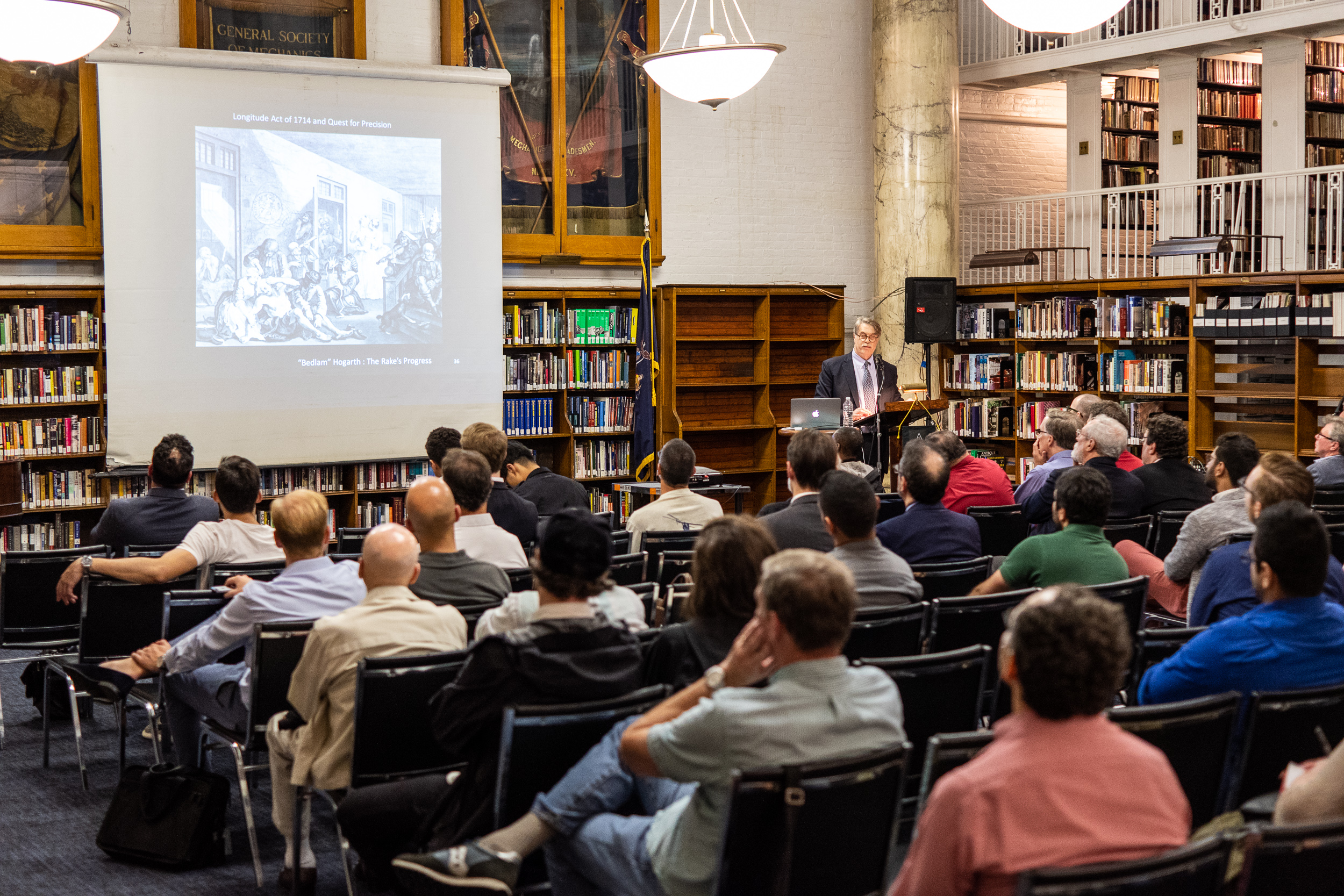
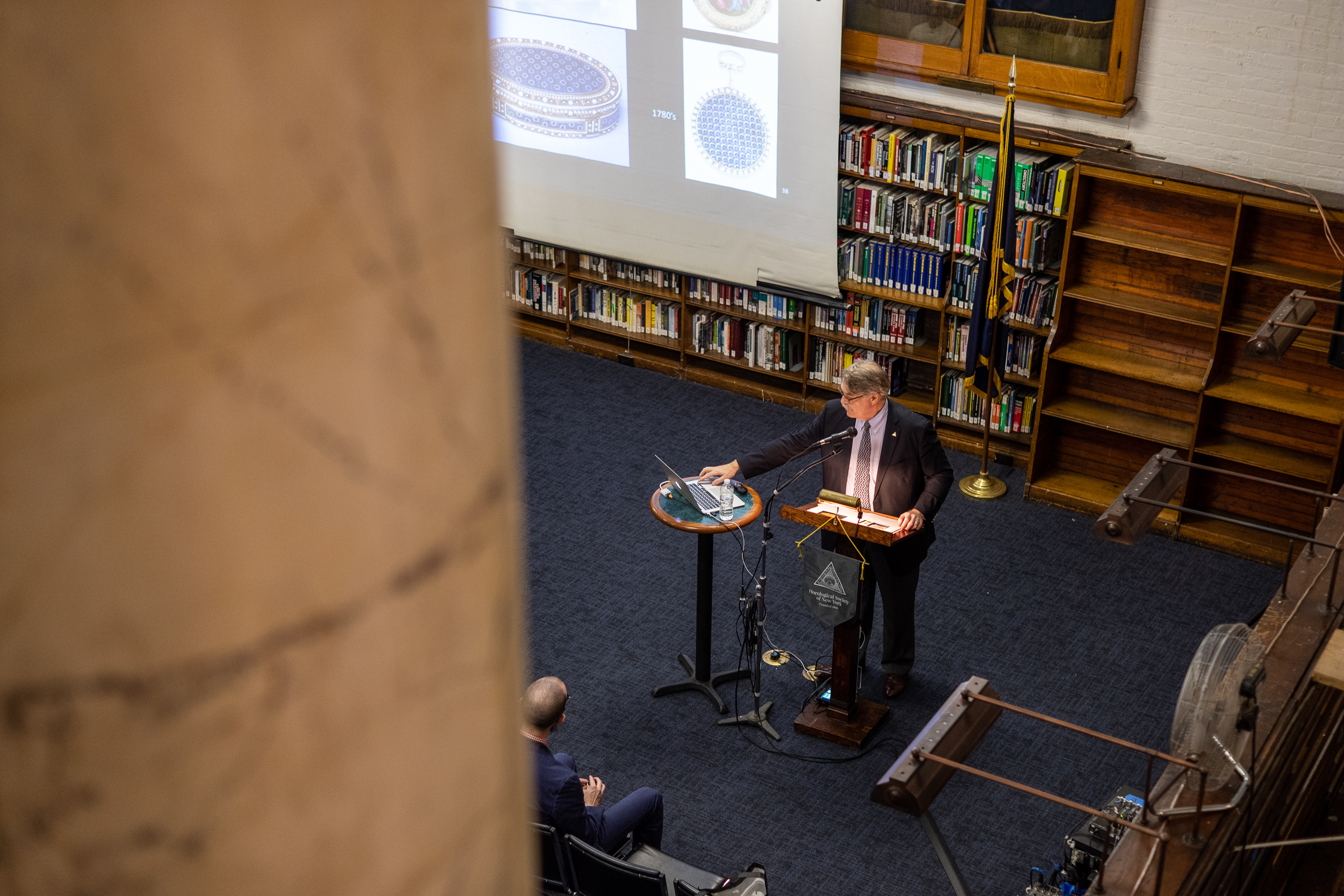
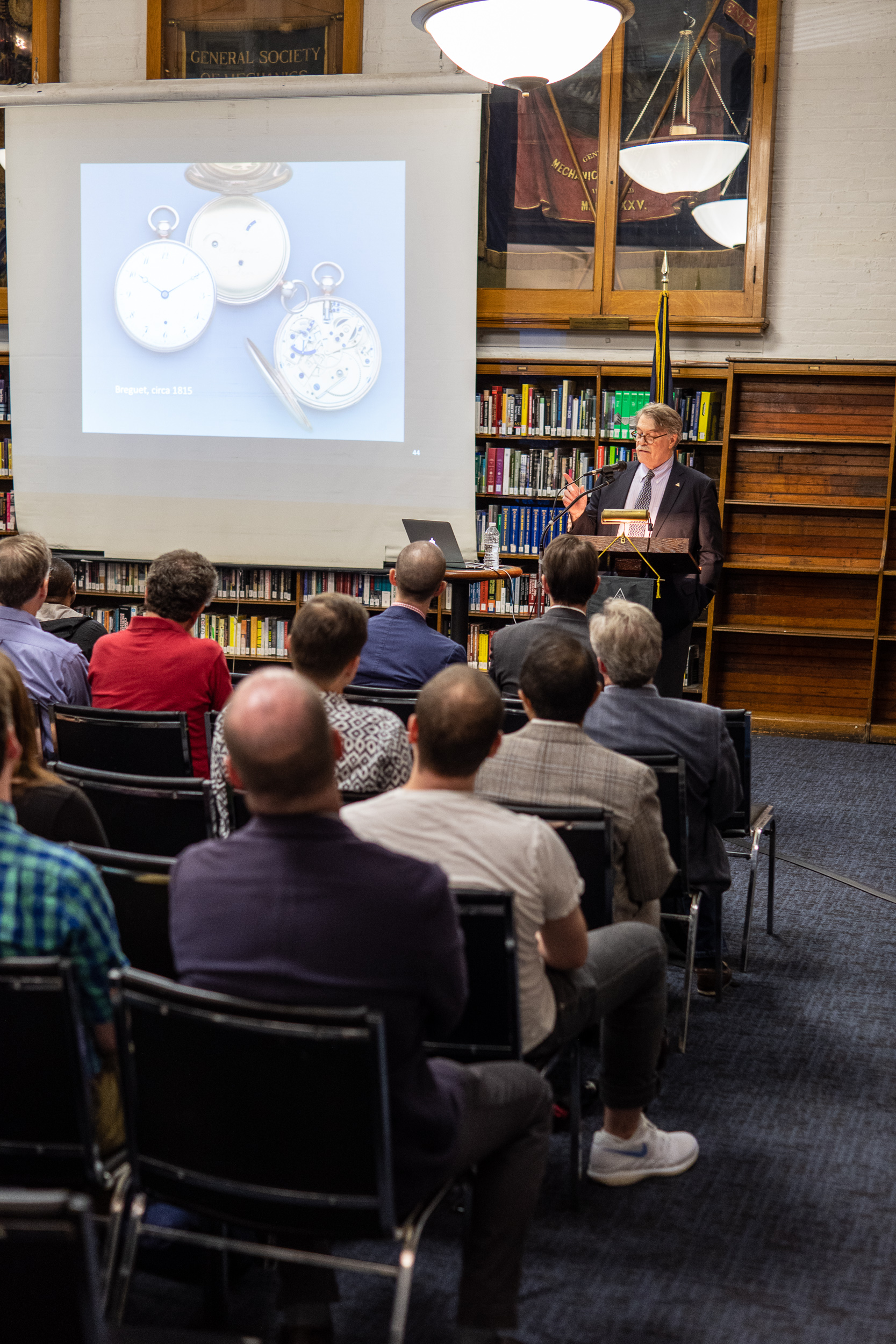
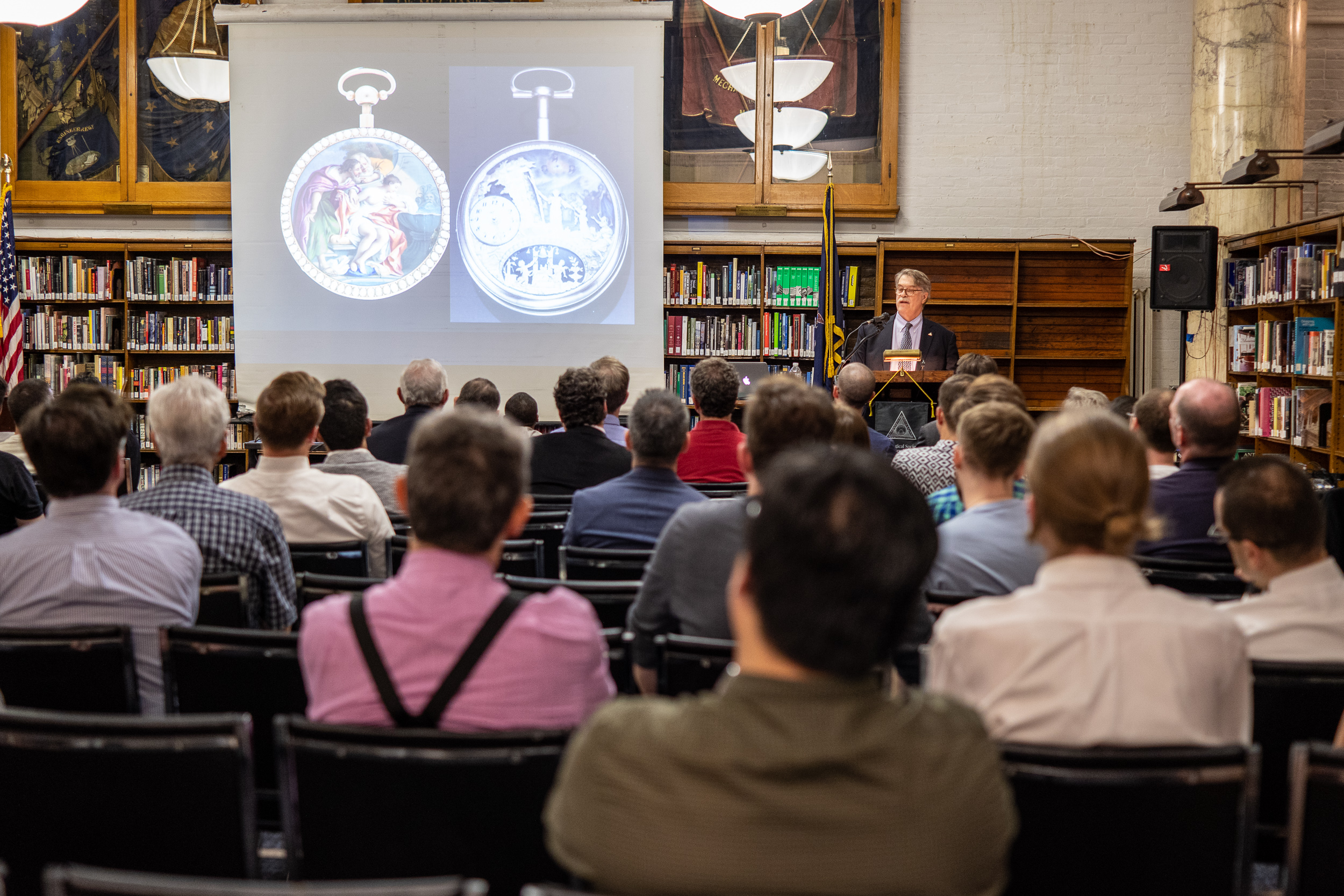


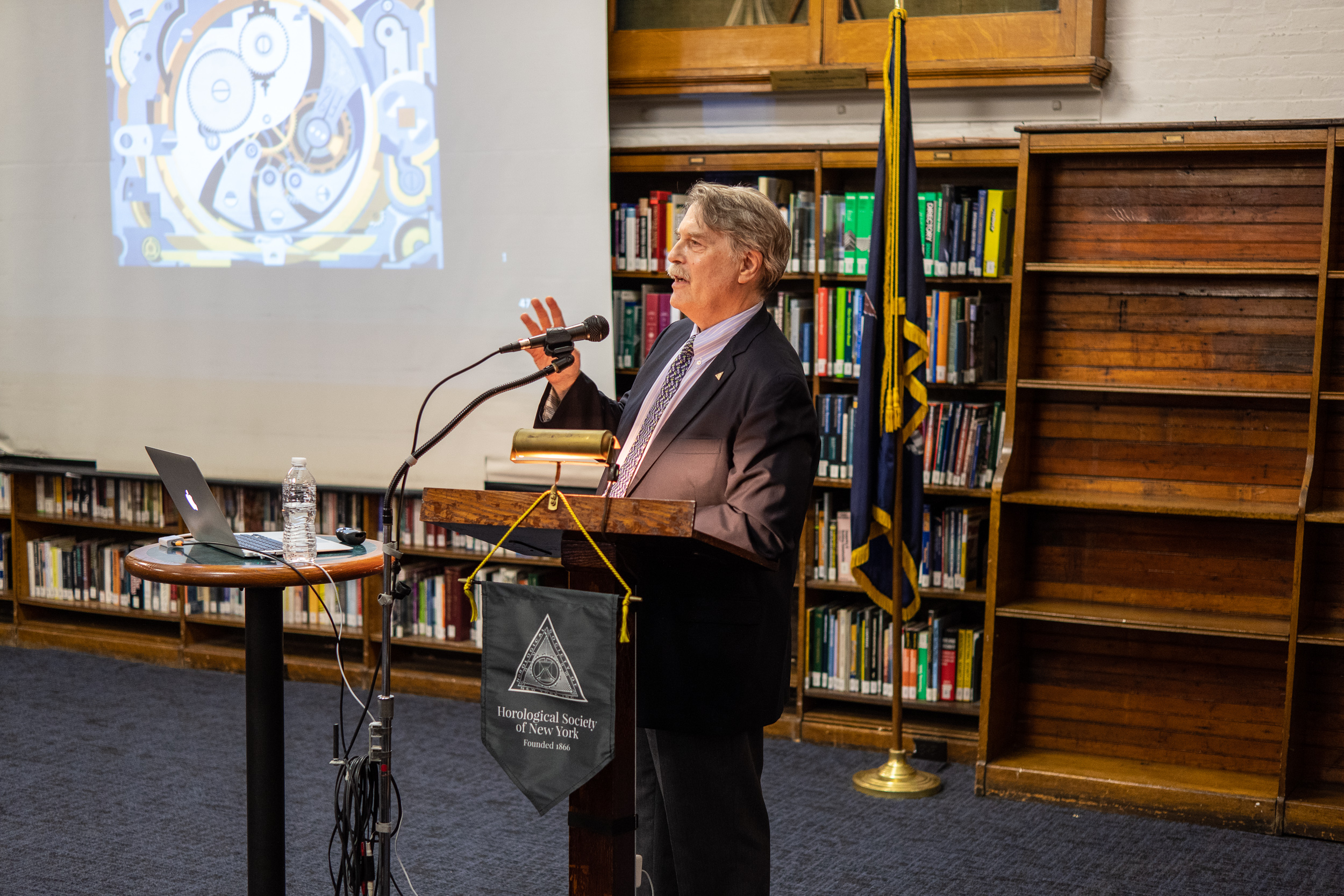
Photography by Atom Moore
Upcoming Lecture: Mechanical Jewels: The Art of the Watch 1500 – 1800, by Jonathan Snellenburg
Join HSNY on Thursday, September 13, 2018 for a lecture on Mechanical Jewels: The Art of the Watch 1500 – 1800, by Jonathan Snellenburg, Director of Watch and Clock Sales for Bonhams Auctioneers, New York.
Jonathan Snellenburg
Early watches look deceptively like their modern descendants. They are familiar enough to assume the first watches were made to "keep time" as watches do today. Not so. In fact, these early watches were actually indifferent timekeepers, more suited to symbolize time than reliably measure it. Although technical advances over the next 200 years improved their performance, it was not until the end of the 18th century that ordinary watches became truly reliable timekeepers.
The earliest watches were probably carried not so much because civilization required portable timekeepers, but rather because of the Renaissance fashion for pendant jewels that served as both display of wealth and talisman. The early 20th century horologist, G. H. Baillie, referred to this developmental period as the "Age of Decoration." Watches were often fashioned into diverse forms and decorated with scenes from Classical literature. Both the form and decoration of these watches were intended convey a message how to make the best use of time.
Using sources from the fine and decorative arts, this lecture considers the imagery of these early jewel-like watches and illustrates how their appearance reflected society’s evolving attitude toward time and timekeeping. Only when the watch was transformed from metaphor into measuring device in the late 18th century did the “pocket watch” take its familiar modern form.
Read the full story here!
In The News: HSNY Trustee John Reardon’s Thoughts on Patek Philippe, Fakes & Hip Hop
John Reardon, Christie's International Head of Watches and fellow HSNY Trustee was recently featured on CNBC for his Patek Philippe expertise. Check out the article (and video!) below for Reardon’s take on fakes. Tune in closely as Reardon delivers catchy hip hop lines on some of the finest watches ever produced. #toomuchsauce
HSNY Limited-Edition Ties Now Available Online
Commemorate HSNY’s 152nd anniversary with limited-edition ties, available in blue and teal!
Custom crafted by Vineyard Vines, these ties are made from 100% imported silk and feature an escape wheel and pallet fork design throughout.
HSNY ties retail for $85 for HSNY members and $100 for non-members. Free domestic shipping is available. All proceeds go towards funding HSNY’s mission to advance the art and science of horology through education.
This marks the first time in HSNY history where a product has been created to commemorate an anniversary. The ties were manufactured in very limited quantities and are only available while stock lasts. These accessories make for an elegant, unique gift and are a must-have for any horological aficionado.
Meet The Board: Ed Hydeman, Executive Director
We’re launching a new series titled Meet The Board, where every month, we’ll profile one of HSNY’s Board members in our newsletter.
Whether you’ve been a part of HSNY for decades or are a new member, we wanted to reintroduce ourselves and share some of our favorite anecdotes, tips and fun facts.
Kicking off the series is none other than our Executive Director, Ed Hydeman. Be sure to say hello to Ed at our next meeting, scheduled for September 13!
HSNY Lectures now available on YouTube!
Missed a lecture meeting? Want a refresh? HSNY monthly lectures are now available on our YouTube channel!
America’s oldest watchmaking guild is bridging the gap between time and technology with a new YouTube channel allowing the public free access to its educational lectures.
To provide an all-encompassing understanding of horology, lecture topics throughout the century have run the gamut from historical, cultural, technical, business and more.
In addition to priority access to meetings and events, HSNY members benefit from immediate access to lectures, which often serve as a valuable source for members abroad. After two months, complete footage will now become available to the public free of charge and live on HSNY’s YouTube channel.
“Our monthly lectures are one of the oldest traditions at the Horological Society of New York,” said HSNY President Nicholas Manousos. “We never want to lose sight of our mission to educate, and today’s technology has allowed us to make good on that promise. Between the introduction of a YouTube channel, our Traveling Education program and our social media presence, we are more connected than ever and able to be a leading source of horological education for people worldwide."
Don't forget to subscribe!
Member Highlight: How One HSNY Member Is Preserving History On 44th Street, One Clock at a Time
For many Horological Society of New York members, it’s fulfilling enough to attend monthly lectures and celebrate the Society at the annual gala. For Justin Shellenberger, becoming part of America’s oldest watchmaking guild led to great advancements in his scholastic and professional career.
A graduate of Rolex’s prestigious Lititz Watch Technicum in Pennsylvania, Shellenberger discovered his love of horology when he picked up a book on the subject. His background in physics helped him to understand many of the finer details of the theory and he soon enrolled in the school to build the experience and skills necessary to be successful. He first learned about HSNY in 2016 when the school posted application details of HSNY’s first Henry B. Fried Scholarship, created to assist watchmaking students succeed in their studies and help cover equipment costs. After careful review by HSNY’s board, Shellenberger became the first student to receive the scholarship in 2017. Little did he know HSNY would present him with an opportunity to repair a one-of-a-kind clock.
An Opportune Time
As HSNY President Nicholas Manousos was walking through the General Society building – a landmark beauty built in 1890 which is home to HSNY’s office and classroom – he noticed a beautiful Seth Thomas regulator clock in the Executive Office on the mezzanine was not running. After investigation, Manousos discovered the clock dating back to the 1800s had been broken for some time. Naturally, HSNY decided to step in and offer to repair the antique.
“Justin immediately came to mind as the man for the job,” said Manousos. “He’s very skilled in clock repair and HSNY is always looking for ways to help our community and involve our members.”
In addition to repairing the clock which was revealed to have a severely damaged calendar, Shellenberger was tasked with creating new parts, including a calendar hand which he redesigned with the General Society’s arm and hammer logo.
“I came up with the idea to customize the hand as an ode to the building in which the clock is housed,” said Shellenberger. “Returning the Seth Thomas clock to working conditions while trying to not represent the repair as falsely original was important given its age and history. I’m glad the General Society met my suggestion to add a new memento with such enthusiasm.”
"We are so grateful for the magnificent restoration of our precious 19th century-old Executive Office Clock," said Victoria A. Dengel, Executive Director of The General Society. "Justin gave a treasured work of craftsmanship new life through the dedicated work of his hands. His masterful work in restoring the Society's precious clock will be recalled as a very special moment in the history of the General Society."
News spreads fast and since then, Shellenberger has repaired an English tall case clock also on 44th street at the legendary Algonquin Hotel. (The clock had been standing in their lobby since the early 1900s when it was taken as payment for an unpaid bill.)
“Joining HSNY has proven to be an incredibly beneficial relationship so far,” said Shellenberger. “Helping me fund my watchmaking studies is something I’ll never forget but having the opportunity to put my practice to work and preserve history is the icing on the cake.”
Check out Justin Shellenberger's website - https://tidsmed.com.
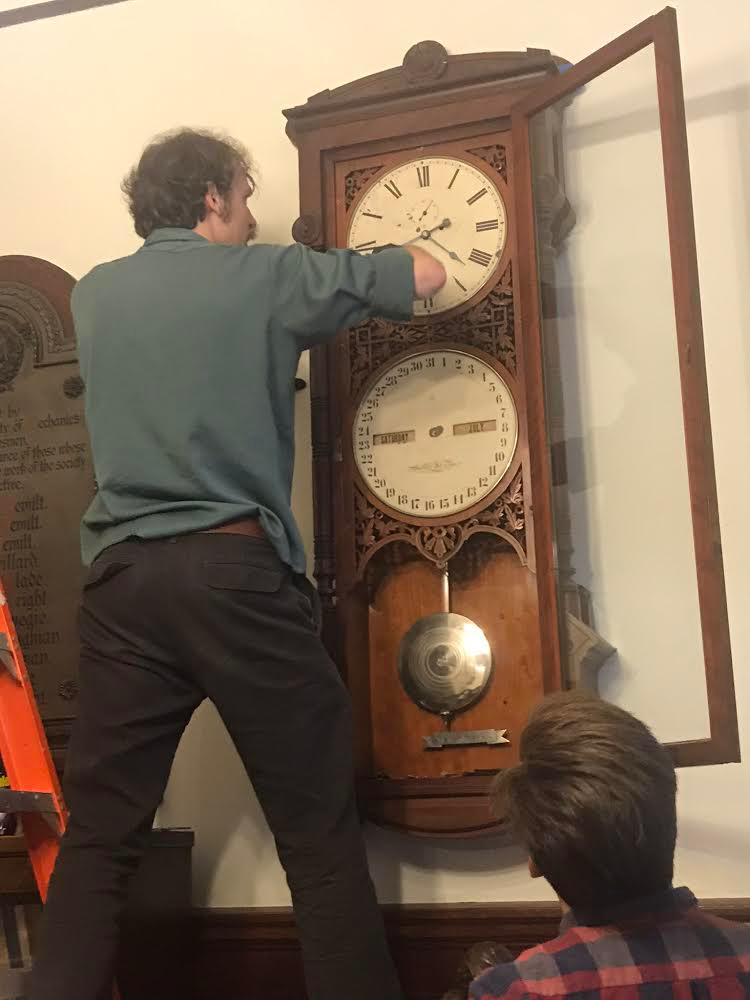
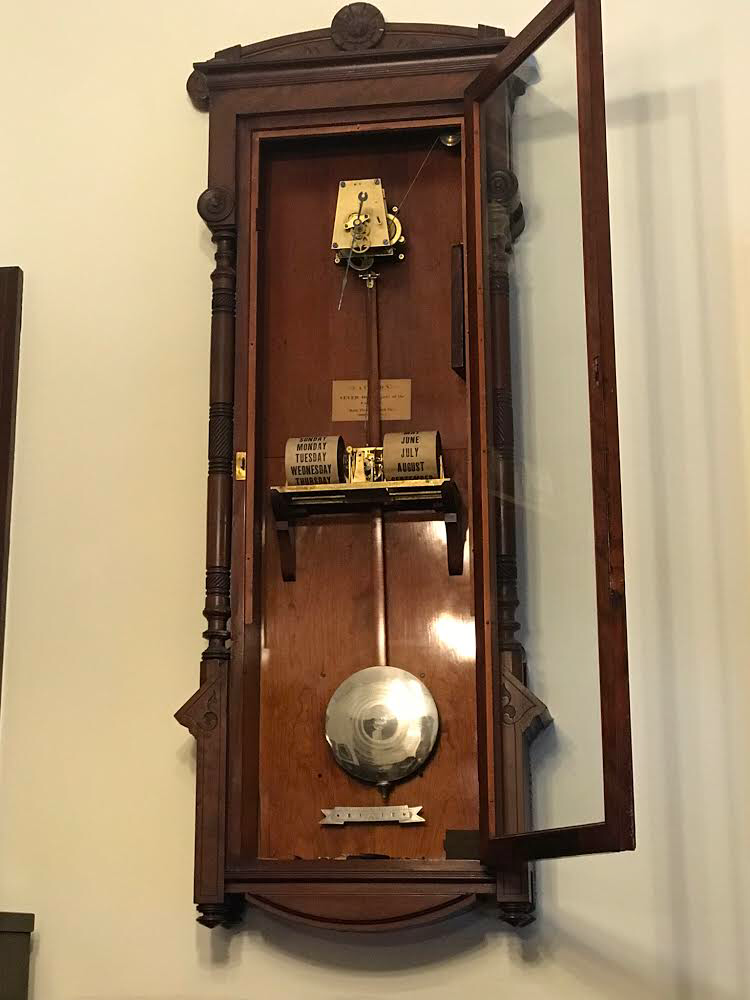
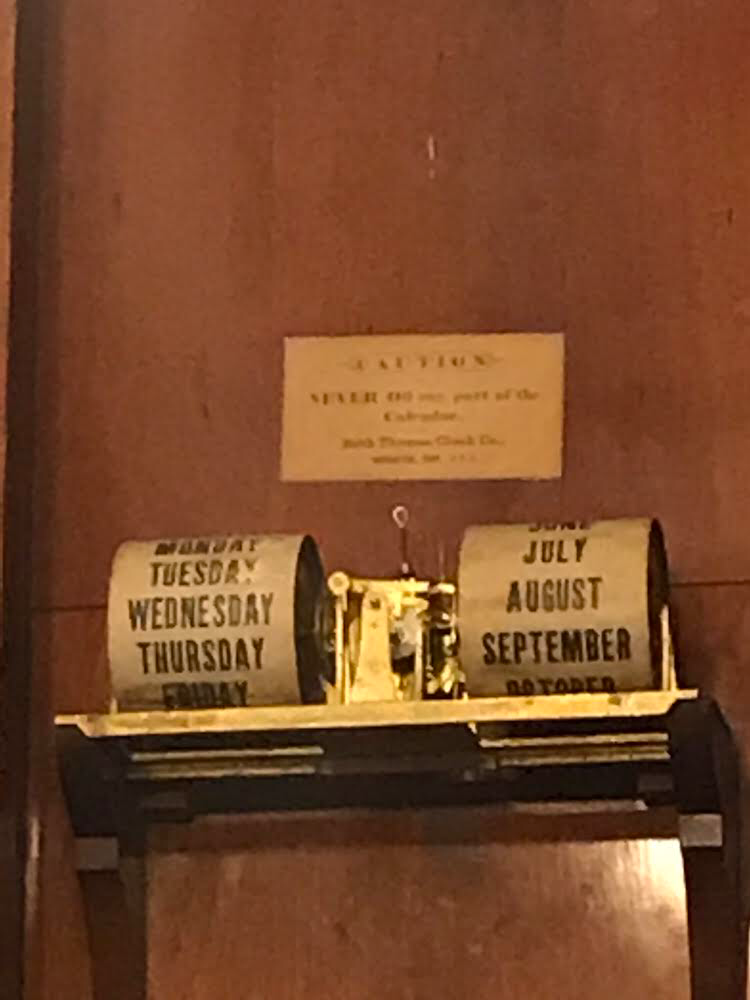
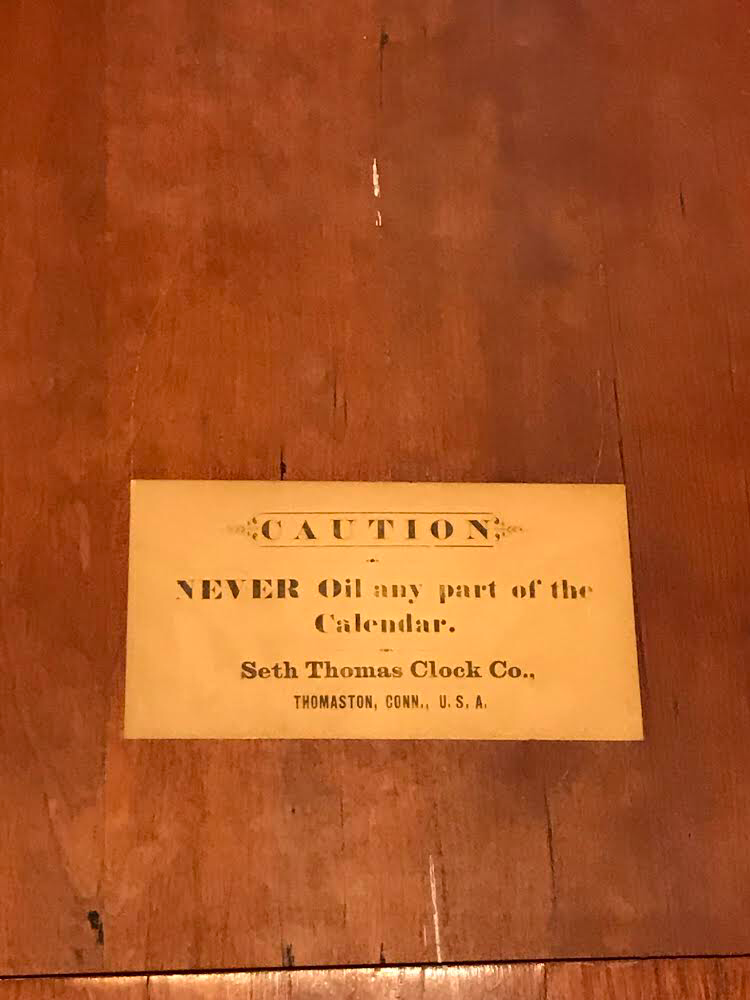

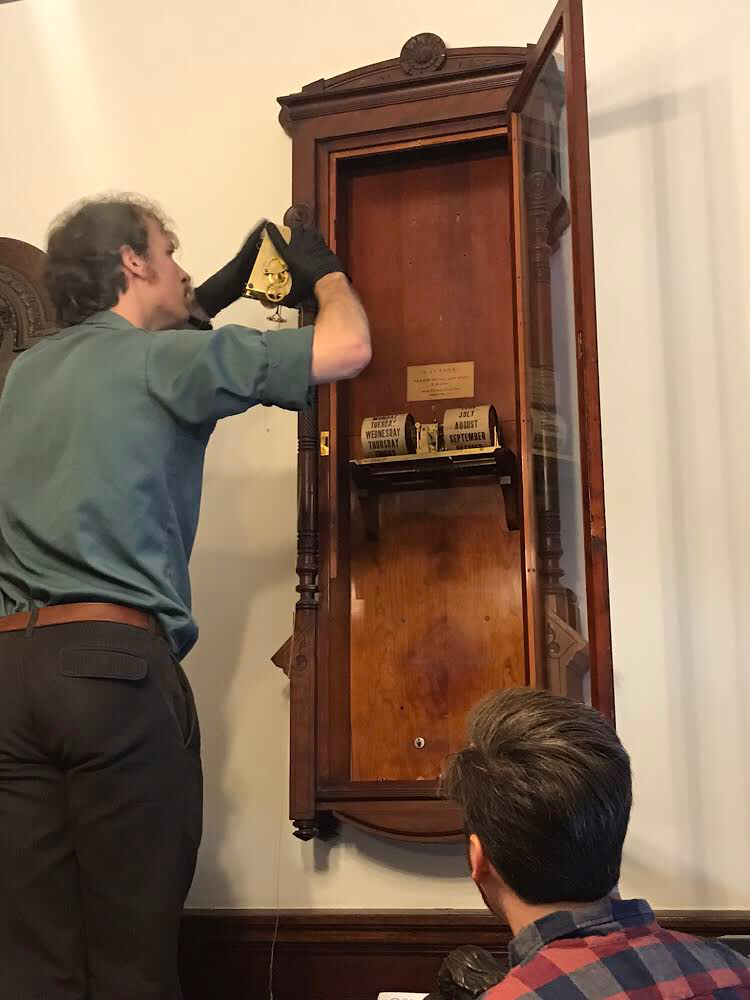
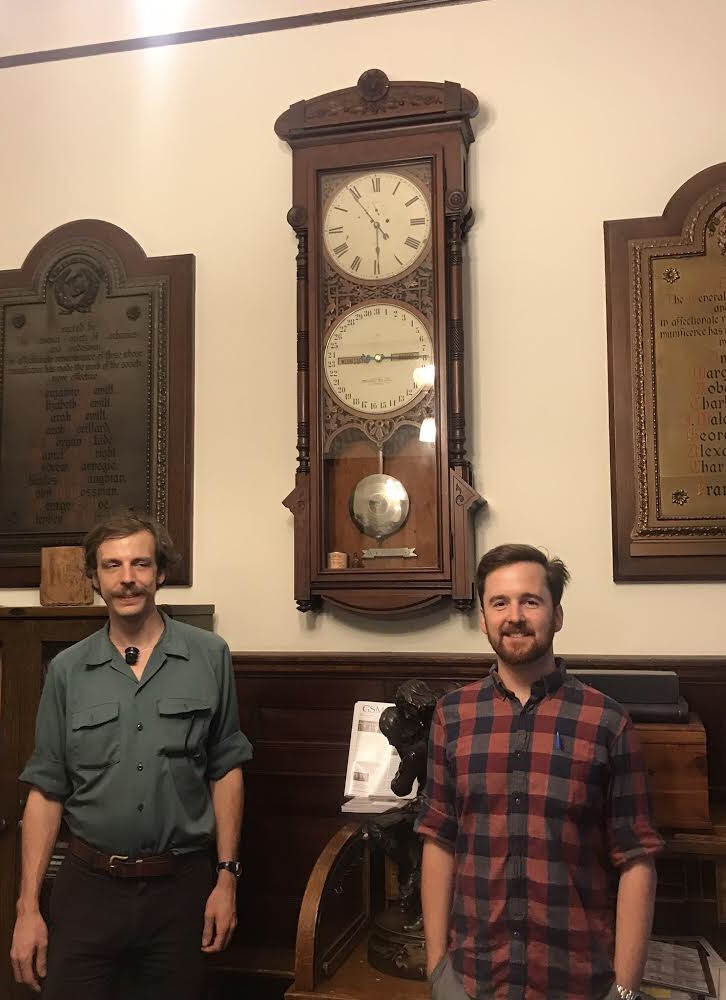
NAWCC to host Cars, Clock, and Watches Symposium
September 20-22, 2018
The Henry Ford Museum of American Innovation
Dearborn, MI
Are you a fan of automobiles and timepieces? If so, the Cars, Clocks, and Watches symposium on September 20-22, 2018 in Dearborn, Michigan is the event for you!
Join the National Association of Watch and Clock Collectors (NAWCC) as it celebrates its 75th anniversary at the Henry Ford Museum of American Innovation.
Discover the lesser know history about the business magnate whose mechanical curiosity was fueled at a young age by tinkering on clocks and watches. Ford’s fascination of horology would help mold his pioneering advances in automotive mass-production and usher in the link between horology and automobiles we still see today.
Registration for the Cars, Clocks, and Watches symposium hosted by the NAWCC – the largest horological organization in the world – can be accessed here. For more information, visit www.carsclocksandwatches.com.
The Henry Ford Museum of American Innovation
HSNY's Traveling Education Heads To Singapore
The Horological Society of New York's Traveling Education program is heading to Singapore! For the first time in 152 years, America’s oldest watchmaking guild will visit Asia and host classes in the heart of Orchard Road at Malmaison by The Hour Glass.
One of the world’s leading specialist watch retailers, The Hour Glass will open the doors of its luxurious thematic salon for a 2-day educational program taught by Vincent Robert, HSNY's Director of Traveling Education, with the assistance of a certified watchmaker from The Hour Glass.
On September 8 & 9, eight watch enthusiasts will have the unique opportunity to assume the role of watchmaker and discover what makes a timepiece tick. Students will be guided through an intimate, hands-on experience examining the inner workings of an ETA 6497 movement and go beyond scratching the surface of horological education. The four-hour course will cover material from HSNY's Horology 101 – 103 classes, to include exercises on movement mechanics, gear training, and winding and setting.
Courses will be offered on Saturday, September 8 (9AM – 1PM & 2:30PM – 6:30PM) and Sunday, September 9 (9AM – 1PM & 2:30PM – 6:30PM). Admission is $500 USD and includes access to watchmaking tools and a mechanical watch movement for the duration of the class. No previous experience is required. PURCHASE TICKETS HERE.
Anna Rolls Appointed Curator of the Worshipful Company of Clockmakers' Collection and Archive
Established in 1631, London's Worshipful Company of Clockmakers is the oldest surviving horological institution in the world. The Company's incredible collection is on display at the Science Museum in South Kensington, London, open free to the public daily. After more than thirty years of service, Past Master Sir George White decided not to seek re-election as Keeper of the Collection and Anna Rolls was appointed as Curator.
Anna Rolls is a conservation professional with over eight years of experience working within the museum sector. Rolls previous position was at the Royal Museums Greenwich, where she worked as the Objects Conservator for Scientific Instruments. Rolls recently carried out research on the Greenwich Time Ball as part of its ongoing repair, and delivered a joint lecture on the subject at the Royal Observatory. Rolls graduated from the University of Sussex in 2008 with a MA in Conservation Studies. Rolls has a Postgraduate Diploma in Conservation of Fine Metalwork from West Dean College and is studying for the Diploma in Repair, Restoration and Conservation of Watches through the British Horological Institute's Distance Learning Course.
Past Master Sir George White said that he is "delighted to welcome Anna into the new role of Curator and looking forward to passing on so much of the history of the Clockmakers' Company that lies behind the items in the Collection."
The Horological Society of New York congratulates our friends across the Atlantic on their continued success in advancing the art and science of horology, and wishes all the best to Anna Rolls with her new position.
HSNY Summer 2018 Survey - NOW LIVE
Our summer 2018 survey is now live! If you haven’t already, please take a moment to answer a few questions in order to help us with future planning. Have additional comments or ideas? Drop us a line here.




